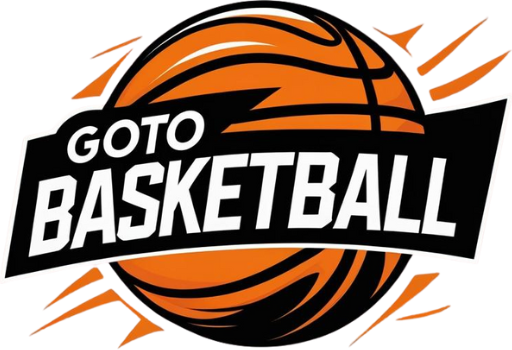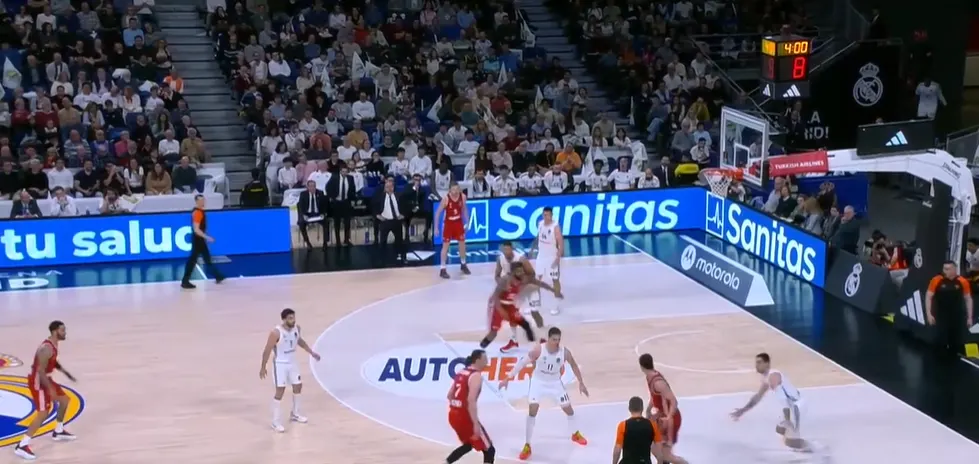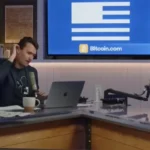I. The Blow: Poirier’s Injury and the Road to Recovery
Anadolu Efes has been dealt a significant blow ahead of the 2025-26 EuroLeague season. Vincent Poirier, their 7-foot French center, will miss at least 4-6 months after undergoing knee surgery in France. The injury was sustained while he represented the French national team during preparations for EuroBasket 2025, forcing him to withdraw from the tournament.
- I. The Blow: Poirier’s Injury and the Road to Recovery
- II. The Replacement: Who is Kai Jones?
- III. Roster Context & Strategic Implications
- IV. Historical Patterns: How Efes Handles Big Man Injuries & NBA Imports
- V. What Challenges Lie Ahead
- VI. My Commentary: Why This Move Makes Sense, But Is Not Without Risk
- VII. Possible Scenarios: Best, Middle, and Worst Case
- VIII. Broader Lessons: European Clubs & NBA Talent Fluidity
- IX. Conclusion: What to Watch Next
Efes’ medical announcement indicated that the surgery allowed doctors to clarify the severity of the injury and set a timetable for his return: late December 2025 at the earliest, roughly the mid-point of the regular EuroLeague season.Euroleague Basketball+1 Until then, the team will have a gap in the center position that they must cover.
Poirier has been an impactful presence for Efes. In last season’s EuroLeague, he averaged 9.5 points, 5.0 rebounds, and 1.3 blocks across 39 games, producing a Performance Index Rating (PIR) of 13.4. Those are solid numbers for a starting center in Europe, particularly one valued for rim protection and defensive presence.
II. The Replacement: Who is Kai Jones?
To fill the void, Anadolu Efes is reportedly bringing in Kai Jones, a former NBA first-round pick, as the NBA replacement for basketballsphere.com. Jones was the 19th overall pick in 2021 and has had NBA stints with the Charlotte Hornets, Los Angeles Clippers, Dallas Mavericks, as well as time in G-League affiliates.
Last season, with the Dallas Mavericks, Jones averaged 5.0 points and 3.1 rebounds in 40 games. He is not yet a star, but he brings youth, physical upside, and the kind of athleticism Efes may use to offset Poirier’s absence. The contract reportedly includes an exit clause for January, which aligns with the expected return date for Poirier.
III. Roster Context & Strategic Implications
a) Previous Role of Poirier
Poirier’s contributions go beyond basic counting stats. He has been a consistent defender, shot blocker, and rebounder in the paint. He led or was among the leaders in blocks in recent EuroLeague seasons. His basketball pedigree includes being a EuroLeague Champion (2023), multiple blocks leader, and rebound leader in prior seasons.
Losing him for 4-6 months means Efes must compensate not only for the scoring and rebounding but for rim protection, defensive anchoring, and veteran presence in big games.
b) Kai Jones’ Profile & What He Brings
Jones offers athleticism, mobility, and potential positional versatility. Although his NBA numbers are modest, physical traits and room for development are what clubs like Efes bet on, especially in Europe, where scheme, positioning, and role clarity can unlock more from such players.
If Efes can integrate him well, Jones could serve as a rotational big, with the potential to slide into starting lineups depending on matchups. Still, expecting Jones to fully replace Poirier is unrealistic—for now, it’s about covering floor space, allowing other insiders (veteran bigs, bench players) to step up, and maintaining defensive identity.
c) Timing & Contract Oracle
The exit clause in January is key. If Poirier is cleared and ready by then, Efes may move on from Jones or shift him to a bench role. This gives them flexibility and mitigates the risk of overcommitting to a replacement long-term before the original starter is healthy again.
IV. Historical Patterns: How Efes Handles Big Man Injuries & NBA Imports
Efes has a trend of looking toward NBA talent when needing to supplement their roster. The EuroLeague culture often sees this: teams leveraging players who have NBA experience but are looking to reset or get more playing time in Europe. It’s a path with risk and reward.
Vincent Poirier himself came from major European teams (Baskonia, Real Madrid) and even had NBA spells. His recent contract with Efes (signed summer 2024) reflects the club’s investment in experienced bigs.Wikipedia+1
In past seasons, when key players are lost, Efes tends to recalibrate. They often rely on internal options first (other bigs already on roster), but then make aggressive roster moves to maintain competitiveness, especially given their status as Turkish Super League and EuroLeague contenders.
V. What Challenges Lie Ahead
1. Chemistry & Adjustment
Integrating a new center mid-summer, who has mostly played in the NBA, requires time. Differences in pace, role expectations, defensive schemes, rotations with pick-and-rolls, and physicality in EuroLeague matchups are non-trivial.
2. Expectations vs Reality
Fans and media may expect that Efes will continue to dominate inside or defend blocks as well as when Poirier was available. That may not be realistic immediately. There might be games where the frontcourt is tested heavily, especially against teams with dominant bigs or a physical rebounding edge.
3. Depth Risks
Injuries are part of basketball; losing Poirier compels other bigs on the roster to carry more load. Should Kai Jones himself get injured or fail to adjust, Efes will need further depth. This impacts rotation, fatigue, and late-game lineups.
4. Midseason Risk
The January clause gives Efes a deadline: if Poirier is not ready, or if Jones is performing well, decisions will have to be made. Will they stick with Jones, shift roles, or even acquire another center?
VI. My Commentary: Why This Move Makes Sense, But Is Not Without Risk
From my perspective, this is a smart, proactive move by Efes. Waiting without a meaningful replacement would leave them vulnerable in early EuroLeague and domestic matches. By bringing in a player with an NBA pedigree like Jones, they signal commitment to contending, not just surviving.
That said, I’m skeptical that Jones will fully replicate Poirier’s defensive presence and rim impact right away. There’s usually a learning curve when coming from an NBA bench or G League roles into a European first-option role. If he embraces the role of complement rather than frontline, this could be a success.
Also, the exit clause is wise—it shows Efes understands that Poirier’s recovery timeline is uncertain, and they don’t want to be stuck with an underperforming contract later.
VII. Possible Scenarios: Best, Middle, and Worst Case
Scenario |
What Happens |
Implications for Efes |
|---|---|---|
Best-Case |
Kai Jones adapts quickly, provides solid defense & change-of-pace offense; Poirier returns in December/January, and the team maintains a high level all season. |
Deep EuroLeague run, domestic league championship push, healthy rotations. |
Middle-Case |
Jones is serviceable but inconsistent; Efes loses some interior defense early, but other players compensate; Poirier returns with some rust. |
Some losses in early rounds, but stabilizes as the season progresses. |
Worst-Case |
Jones fails to adapt, Poirier’s recovery is delayed or compromised, frontcourt struggles persist, and rotations get thin. |
Drop in performance, exit early in EuroLeague, possible pressure on coaching staff, and roster moves. |
VIII. Broader Lessons: European Clubs & NBA Talent Fluidity
Efes’ move reflects a growing pattern: European teams increasingly draw on NBA talent, whether fringe, bench, or developing, to plug holes. The boundary between Europe and the NBA isn’t rigid anymore. For many players, Europe offers an opportunity to reset, get more minutes, refine skills, and either become stars locally or return to the NBA in better shape.
From the club side, it shows that ambition requires adaptability. Injuries happen—depth, scouting networks, and flexibility in contracts are essential. Efes seems to have these in place; acquiring Jones quickly after Poirier’s injury is evidence.
IX. Conclusion: What to Watch Next
-
Early performances of Kai Jones in EuroLeague and Turkish League: how many minutes, defensive stats (blocks, rebounds), and how well he meshes with Efes’ defensive schemes.
-
Poirier’s recovery updates: Is he hitting milestones? Any complications? Might the timeline shift?
-
Roster adjustments: Will Efes make further signings (bench bigs), shift existing players, or alter game plans to protect weaker areas?
-
Results vs big opposition: When Efes faces teams with dominant centers, how they hold up may be key signals for how successful this replacement strategy is.




